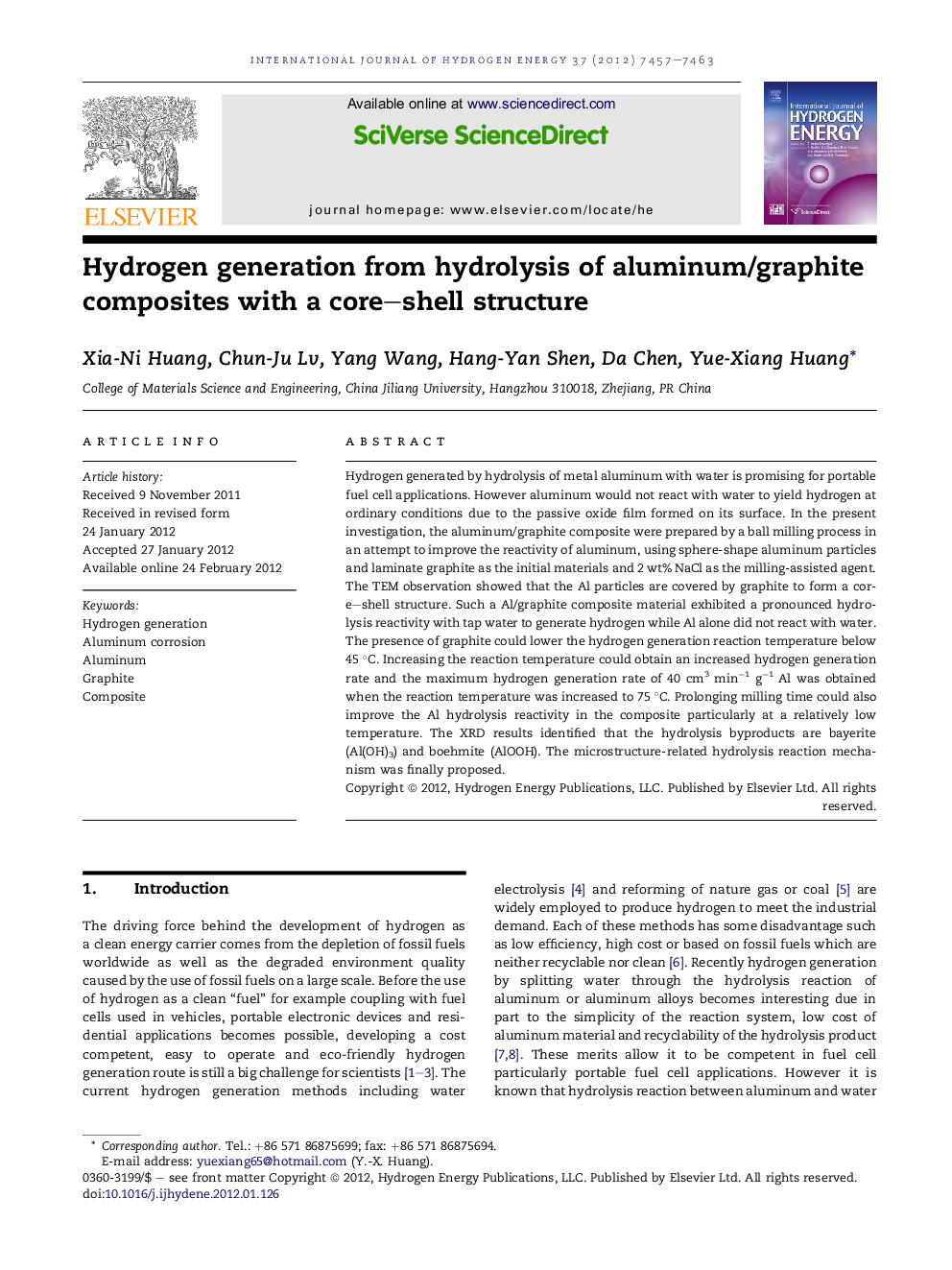| کد مقاله | کد نشریه | سال انتشار | مقاله انگلیسی | نسخه تمام متن |
|---|---|---|---|---|
| 1278548 | 1497560 | 2012 | 7 صفحه PDF | دانلود رایگان |

Hydrogen generated by hydrolysis of metal aluminum with water is promising for portable fuel cell applications. However aluminum would not react with water to yield hydrogen at ordinary conditions due to the passive oxide film formed on its surface. In the present investigation, the aluminum/graphite composite were prepared by a ball milling process in an attempt to improve the reactivity of aluminum, using sphere-shape aluminum particles and laminate graphite as the initial materials and 2 wt% NaCl as the milling-assisted agent. The TEM observation showed that the Al particles are covered by graphite to form a core–shell structure. Such a Al/graphite composite material exhibited a pronounced hydrolysis reactivity with tap water to generate hydrogen while Al alone did not react with water. The presence of graphite could lower the hydrogen generation reaction temperature below 45 °C. Increasing the reaction temperature could obtain an increased hydrogen generation rate and the maximum hydrogen generation rate of 40 cm3 min−1 g−1 Al was obtained when the reaction temperature was increased to 75 °C. Prolonging milling time could also improve the Al hydrolysis reactivity in the composite particularly at a relatively low temperature. The XRD results identified that the hydrolysis byproducts are bayerite (Al(OH)3) and boehmite (AlOOH). The microstructure-related hydrolysis reaction mechanism was finally proposed.
► The aluminum/graphite composites were prepared as hydrogen generating materials.
► The addition of graphite can improve the reactivity of aluminum in tap water.
► The presence of graphite can lower aluminum hydrolysis temperature below 45 °C.
► The maximum hydrogen generation rate of 40 cm3 min−1 g−1 Al was obtained.
Journal: International Journal of Hydrogen Energy - Volume 37, Issue 9, May 2012, Pages 7457–7463